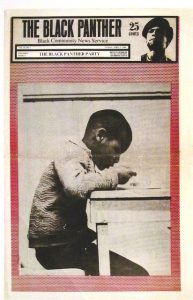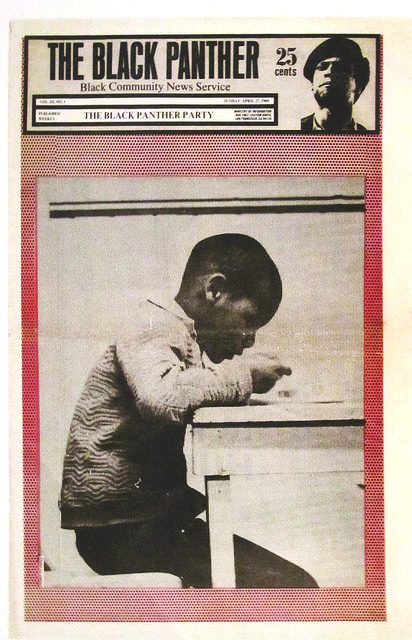
‘The Black Panther, 1969’ from Oakland Museum. Photo by rocor via flickr, CC BY-NC 2.0
On the heels of Disney’s billion dollar blockbuster Black Panther, the studio has made a $1 million donation to Boys and Girls Clubs of America, which will open STEM centers in “underserved areas” of many cities, including, of course, Oakland, where the movie starts and ends. But how much of a difference will that make if the kids the organization is trying to serve are no longer able to live near those centers?
STEM centers are wonderful, and of course the symbolism in relation to the amazing Wakandan technological prowess can’t be beat. But the Oakland of today is not so much the Oakland of the Black Panther Party, nor even the Oakland of the 1990s where Black Panther gets its start. Oakland is gentrifying rapidly, as wealthy people (and tech companies) pushed out of San Francisco by soaring prices pour into the city.
Displacement has become a top concern for longtime residents of Oakland, especially its Black residents, who stuck it out through the sorts of troubles that radicalized the character Erik Killmonger in the film. These residents organized and took care of each other and their neighborhoods, even as they felt abandoned, if not by Wakanda then by their own country. Now that tech resources are flooding into the city, for many residents the challenge is less about being trapped in an “underserved” area and more about trying to stay put in a place where opportunities are on the rise.
Since the end of the economic recession, Oakland has seen some of the fastest housing cost increases in the nation. Since 2011, the median home sale price in Oakland has increased 178 percent. More than half of Oakland’s low-income residents are cost burdened (spending more than 30 percent of their income on housing), and the percent of folks who are severely cost burdened (spending more than 50 percent of their income on housing) has more than doubled between 2000 and 2010, according to PolicyLink. There are 16.7 percent less children (under 18) in Oakland in 2010 than in 2000. This has affected Oakland’s Black population in particular: Oakland lost a quarter of its Black population from 2001 to 2011, and that percentage has continued to fall, with the white and Hispanic populations each now larger than the Black population.
Given all we know about how more diverse teams make better decisions and more equitable regions are stronger over time, this situation harms the whole region as it loses out on the potential talents of the people it’s pushing out.
If Disney wants to match its newly found resources to the needs of Black people in Oakland today in a meaningful way, it should combine its STEM investment with a significant investment in affordable housing preservation and creation. That way those children, whose parents are likely employed in all sorts of essential but non-tech-salaried jobs, will be able to live close enough to attend the STEM centers and take the internships that will help them realize their inner Shuri.





Comments